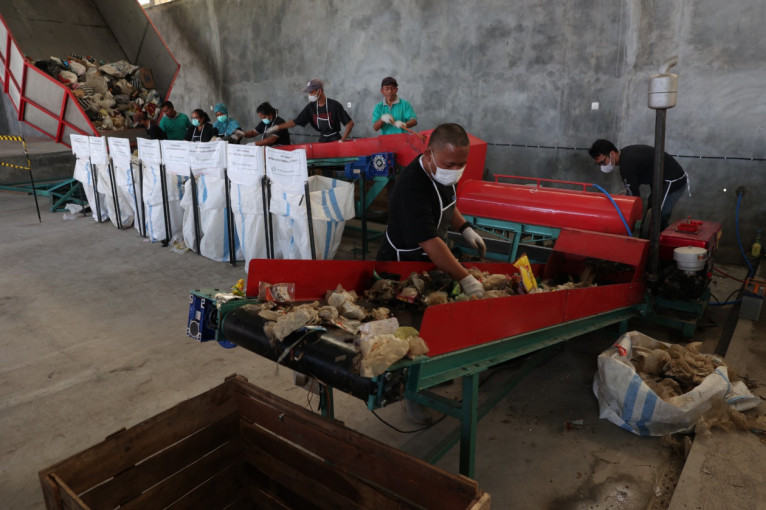
Universitas Gadjah Mada (UGM), in collaboration with the Sinduadi Village Government, inaugurated the integrated waste management site “Sinduadi Gumregah Gayeng Regeng” in Sinduadi Village, Mlati District, Sleman, Yogyakarta, on Monday (14/8).
The opening of this integrated waste management site was marked by the unveiling of the signboard by Sleman Regent Kustini Sri Purnomo, witnessed by UGM Vice-Rector for Student Affairs, Community Service, and Alumni Dr. Arie Sujito and Head of the Yogyakarta Environmental Office, Kuncoro Cahyo Adi.
The regent said this site results from the collaboration between the village government and UGM, serving as a model for independent waste management in Sleman villages.
“We want waste to be managed and resolved at the village level. This site becomes a pilot project in Sleman villages,” she said.
“We must dare to innovate and approach this by considering the economic impact on each village’s business entity.”
Dr. Sujito mentioned that UGM pays special attention to the waste issue, which has become more prominent recently due to the temporary closure of the Piyungan landfill.
“Waste has become our concern; we want to solve the problem together and even create innovation between the campus and the community,” he said.
The closure of the Piyungan landfill could serve as momentum for the local government and the village government to collaborate with academics in solving waste management problems independently at the village level.
The Head of Sinduadi Village, Senen, explained that the construction of the integrated waste management site in Sinduadi Village began in 2019. Due to funding constraints, it was completed in 2023 in collaboration with UGM academics.
Although the site capacity is only a quarter of the target of 18 tons of waste that could be managed daily, he is grateful that the facility is now operational.
“We plan that the target of 18 tons per day will be achieved in 2-4 months, and we hope that Sinduadi can achieve zero waste,” he said.
Dr. Wiratmi, a lecturer in the Department of Chemical Engineering, Faculty of Engineering at UGM, stated that the site uses an odor elimination technology. According to her, the foul odor emitted from waste is caused by the high water content in contaminated waste.
“We developed technology to extract liquid from waste, as the water content can reach 70 percent,” she explained.
Another technology developed involves processing liquid waste in a bioreactor machine into liquid fertilizer. The process is done in a closed environment to reduce odor.
“Another advantage is that the solid volume becomes smaller, so we don’t need a larger space to manage waste for composting or maggot cultivation,” she added.
“We also incorporate aeration technology by introducing oxygen to produce liquid fertilizer quickly and efficiently without leaving any odor.”
Author: Gusti Grehenson
Photographer: Firsto

